This article was medically reviewed by Luba Lee, FNP-BC, MS. Luba Lee, FNP-BC is a Board-Certified Family Nurse Practitioner (FNP) and educator in Tennessee with over a decade of clinical experience. Luba has certifications in Pediatric Advanced Life Support (PALS), Emergency Medicine, Advanced Cardiac Life Support (ACLS), Team Building, and Critical Care Nursing. She received her Master of Science in Nursing (MSN) from the University of Tennessee in 2006.
There are 12 references cited in this article, which can be found at the bottom of the page.
This article has been viewed 99,891 times.
Amniotic fluid is a clear liquid that's mostly odorless. It surrounds and cushions your baby in the womb. Typically, it starts leaking when the amniotic sac ruptures near the end of pregnancy, signaling the start of labor. However, the sac can rupture earlier in pregnancy, and it's important to see your doctor if it happens. Because you may leak different fluids during pregnancy, use your sight and smell to help you determine if it's amniotic fluid. Whatever way, if you're worried, it's always best to talk to your doctor, as they can advise you about the best course of action to take.
Steps
Noticing the Color, Amount, and Smell of Your Discharge
-
1Put a pad on to catch the discharge. If you start leaking fluid, catch some with a pad. Doing so will make it easier to identify what it is. Plus, if you think you have an issue, you can take it with you to the doctor to help determine what the problem is.[1]
-
2Look for pale or clear liquid to identify amniotic fluid. This fluid is typically odorless and very light in color. If your water breaks, you may feel a rush of water but that's not always true! Sometimes, it's a light trickle.[2]
- Your vaginal area may just feel wet or damp.
- Pay attention to the amount of the discharge so that you can tell your doctor about it.
Advertisement -
3Watch for stringy mucus toward the end of labor, called the mucus plug. This mucus is wedged in the entrance of your uterus while you're pregnant to keep bacteria out. As you get closer to giving birth, usually within a few days or even just hours, your body will naturally push this plug out.[3]
- This can be bloody or pink, but it can also be clear.
-
4Sniff the fluid to determine if it's urine. During the late stages of pregnancy especially, the baby can put pressure on your bladder, causing you to leak pee. While a little gross, try sniffing it to see if it seems to be urine. If it doesn't smell like urine, it might be amniotic fluid instead.[4]
- It's likely urine if you only get a little fluid when you sneeze or cough.
-
5Consider how recently you've had sex. If you've had sex within an hour or so without a condom, the fluid could just be semen and vaginal secretions leaking back out. If it only happens once, and it's not a lot of fluid (not enough to soak your shoes), then it's likely not amniotic fluid.
-
6Call your doctor if the fluid is green, brown, or smells bad. If you have liquid coming out that is more green in color, that could point to an infection, particularly if it has a bad smell. It could also indicate meconium, which is what is in the baby's digestion system. Either sign requires immediate medical attention.[5]
- Meconium can be more brownish.
-
7Check for blood in the discharge early in the pregnancy. If your amniotic sac has ruptured, then you will likely see blood if you're still in your first trimester. If it's not, it could just be vaginal discharge, which does increase during pregnancy for some people.
- If you see blood, go to the emergency room.
Diagnosing Low Amniotic Fluid
-
1Get all your prenatal checkups recommended by your doctor. The best way to diagnose this condition is through regular checkups. Your doctor or midwife will measure your belly to check your baby's growth. If it's low, they may recommend you get an ultrasound.[6]
- Risk factors for this condition include low or high blood pressure, a previous baby with a low birth rate, and certain diseases, such as lupus.
-
2Pay attention to clear or pale liquid flowing from your vagina. Sometimes, a small leak may cause the issue of low amniotic fluid. However, this symptom is fairly rare. The liquid will be clear and mostly odorless, and the flow can be at random intervals or constant.[7]
- If it's just when you sneeze or cough, it's more likely to be urine. However, it doesn't hurt to get checked out by your doctor.
-
3Ask for an ultrasound if you're concerned. With an ultrasound, the medical professional can measure pockets of fluid in your uterus. They can then determine if it's below what it should be.[8]
- The most reliable method is to measure the largest pocket, which should be above 0.8 inches (2.0 cm) at the end of the second trimester.
-
4Seek immediate medical attention if you notice a decrease in your baby's movement. Starting at week 28, your doctor will likely ask you to count kicks. Typically, you should feel 10 kicks in an hour, but not every baby is the same. The key is to notice if the movement suddenly drops off or goes completely absent. If it does, you need to go to the emergency room or contact your doctor immediately.[9]
- While everything could be fine, it's better to err on the side of safety. If something is wrong, the sooner you and the baby can get care, the better.
- Your doctor will likely perform a pelvic exam to take a sample of fluid, as well as a dye test.
Knowing When Your Water Breaks
-
1Notice a feeling of wetness around your vaginal area. While you may not "gush," you will likely feel some wetness leaking out. Generally, you'll feel this in your vagina or between your vagina and your anus. You may notice your clothes get wet.[10]
- You can take any pad that has liquid on it with you to the doctor if you think it may be amniotic fluid. They can use it to test what kind of fluid it is!
-
2Consider getting an AmniCheck for testing at home. You might be able to save yourself a trip to the hospital if you can check if the liquid on your pad is amniotic fluid at home. Use the swab that comes in the kit to collect a fluid sample, and then brush the damp swab tip onto the diagnostic patch on the color wheel. Compare the color wheel to the positive and negative ones on the package.
- If it’s a positive reading, you should consult your doctor or hospital immediately.
-
3Pay close attention to a sudden rush of water. You've probably seen the dramatic scenes in shows and movies where water gushes out of a pregnant person. While this doesn't happen as often in real life, it does happen. You may feel it gushing down your legs and even filling up your shoes. In that case, it's almost definitely amniotic fluid.[11]
-
4See your doctor immediately if your water breaks. When this happens, you're likely going into labor, or you may need to be induced to go into labor. If you are at or after 34 weeks, you will likely be induced. At 37 weeks, you may be given the choice to wait to see if you go directly into labor. Before 34 weeks, the doctor will likely put you on bed rest to try to keep you from going into labor.[12]
- Before 34 weeks, your baby is premature so the doctor will want to put the birth off as long as possible. They will likely give you steroids to help your baby's lungs mature before you give birth.
-
5Expect a speculum exam from the nurse or doctor. Even if you had a rushing sensation, the medical staff will want to check you out to make sure it's definitely your amniotic sac rupturing. They might do a speculum test, where they insert a speculum into your vagina to check for a pool of liquid.[13]
- They'll also take a sample to test the liquid and make sure it's amniotic fluid.
- Some doctors will use a less-invasive check, where they ask you to wear a pantyliner and then they swab that fluid to check if it's amniotic.[14]
- If it's not amniotic, they'll likely just send you home. But don't worry, false alarms happen all the time, and it's nothing to be embarrassed about!
References
- ↑ https://medlineplus.gov/ency/patientinstructions/000512.htm
- ↑ https://www.msdmanuals.com/professional/gynecology-and-obstetrics/abnormalities-and-complications-of-labor-and-delivery/prelabor-rupture-of-membranes-prom
- ↑ https://americanpregnancy.org/labor-and-birth/signs-of-labor/
- ↑ https://americanpregnancy.org/labor-and-birth/signs-of-labor/
- ↑ https://americanpregnancy.org/labor-and-birth/signs-of-labor/
- ↑ https://www.babycentre.co.uk/a568740/low-amniotic-fluid-oligohydramnios
- ↑ https://www.whattoexpect.com/pregnancy/pregnancy-health/complications/oligohydramnios.aspx
- ↑ https://www.babycentre.co.uk/a568740/low-amniotic-fluid-oligohydramnios
- ↑ https://www.whattoexpect.com/pregnancy/fetal-development/fetal-movement/
- ↑ https://www.mayoclinic.org/healthy-lifestyle/labor-and-delivery/in-depth/water-breaking/art-20044142
- ↑ https://www.mayoclinic.org/healthy-lifestyle/labor-and-delivery/in-depth/water-breaking/art-20044142
- ↑ https://medlineplus.gov/ency/patientinstructions/000512.htm
- ↑ https://www.aafp.org/afp/2006/0215/p659.html
- ↑ https://www.ncbi.nlm.nih.gov/pmc/articles/PMC4575365/
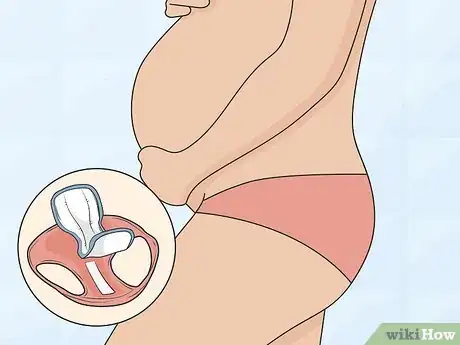






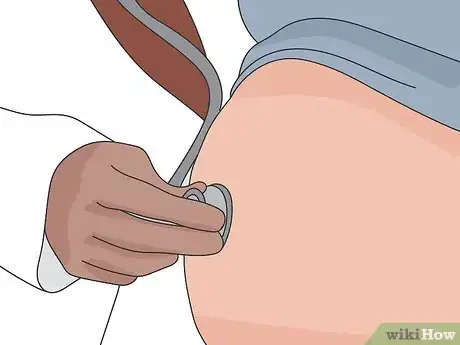







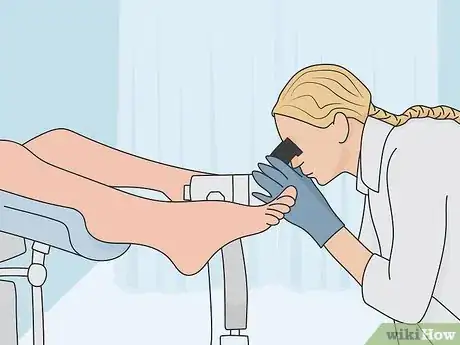





















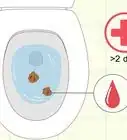


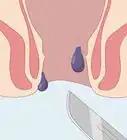



































Medical Disclaimer
The content of this article is not intended to be a substitute for professional medical advice, examination, diagnosis, or treatment. You should always contact your doctor or other qualified healthcare professional before starting, changing, or stopping any kind of health treatment.
Read More...